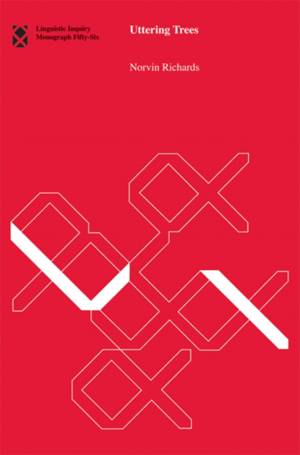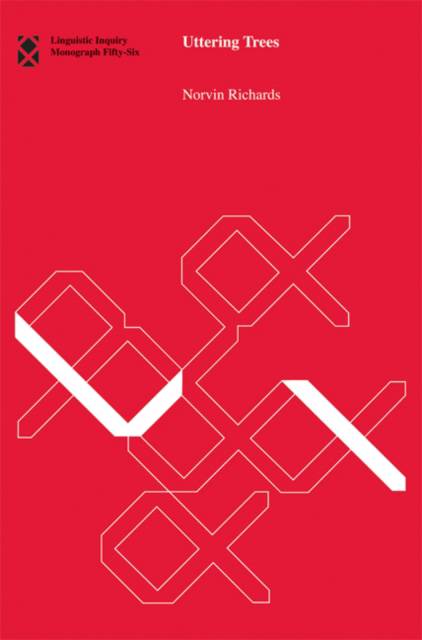
- Afhalen na 1 uur in een winkel met voorraad
- Gratis thuislevering in België vanaf € 30
- Ruim aanbod met 7 miljoen producten
- Afhalen na 1 uur in een winkel met voorraad
- Gratis thuislevering in België vanaf € 30
- Ruim aanbod met 7 miljoen producten
Omschrijving
A study of the interface between syntax and phonology that seeks deeper explanations for such syntactic problems as case phenomena and the distribution of overt and covert wh-movement.
In Uttering Trees, Norvin Richards investigates the conditions imposed upon syntax by the need to create syntactic objects that can be interpreted by phonolog--that is, objects that can be pronounced. Drawing extensively on linguistic data from a variety of languages, including Japanese, Basque, Tagalog, Spanish, Kinande (Bantu language spoken in the Democratic Republic of the Congo), and Chaha (Semitic language spoken in Ethiopia), Richards makes two new proposals about the relationship between syntax and phonology. The first, "Distinctness," has to do with the process of imposing a linear order on the constituents of the tree. Richards claims that syntactic nodes with many properties in common cannot be directly linearized and must be kept structurally distant from each other. He argues that a variety of syntactic phenomena can be explained by this generalization, including much of what has traditionally been covered by case theory.
Richards's second proposal, "Beyond Strength and Weakness," is an attempt to predict, for any given language, whether that language will exhibit overt or covert wh-movement. Richards argues that we can predict whether or not a language can leave wh in situ by investigating more general properties of its prosody. This proposal offers an explanation for a cross-linguistic difference--that wh-phrases move overtly in some languages and covertly in others--that has hitherto been simply stipulated. In both these areas, it appears that syntax begins constructing a phonological representation earlier than previously thought; constraints on both word order and prosody begin at the beginning of the derivation.
Specificaties
Betrokkenen
- Auteur(s):
- Uitgeverij:
Inhoud
- Aantal bladzijden:
- 248
- Taal:
- Engels
- Reeks:
- Reeksnummer:
- nr. 56
Eigenschappen
- Productcode (EAN):
- 9780262513715
- Verschijningsdatum:
- 31/03/2010
- Uitvoering:
- Paperback
- Formaat:
- Trade paperback (VS)
- Afmetingen:
- 152 mm x 226 mm
- Gewicht:
- 340 g

Alleen bij Standaard Boekhandel
Beoordelingen
We publiceren alleen reviews die voldoen aan de voorwaarden voor reviews. Bekijk onze voorwaarden voor reviews.











